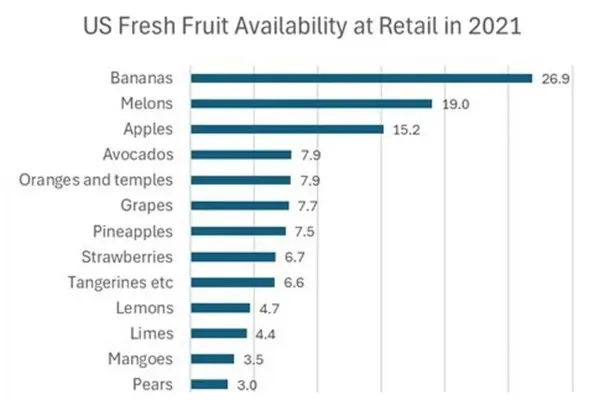Bananas, a significant source of potassium, are enveloped in their own biodegradable packaging, making them a convenient and widely consumed fruit in the US. They play a crucial role in the American diet, with their consumption exceeding 20% of the total fresh fruit intake, which has expanded from 92 to 136 pounds per person annually over the past 50 years. Despite this diversity and growth in fruit consumption, bananas maintain their position as a prevalent choice.

Availability in pounds per capita.
However, the global banana industry, valued at 12 billion dollars and catering to over 100 countries with dessert bananas, along with the supply of cooking bananas and plantains crucial for the developing world, faces a significant threat from Fusarium Tropical Race 4 (TR-4). This soil-borne fungus strain, capable of rendering fields infertile for banana cultivation, is progressively spreading worldwide, despite containment efforts. This challenge is not unprecedented, as the industry previously encountered a similar threat in the early 20th century with Panama Disease, which similarly devastated banana crops.
The future of bananas presents a scenario where optimism is warranted, with the potential for scientific advancements and rational approaches to prevail in educating consumers and marketing strategies. The current threats facing the banana industry, both locally and globally, might catalyze significant enhancements and encourage diversity within the sector. Developing banana varieties resistant to diseases such as Panama Wilt and Black Sigatoka is a priority for producers. Additionally, introducing a non-browning characteristic could minimize food waste throughout the distribution process and in households.
Source: forbes.com
